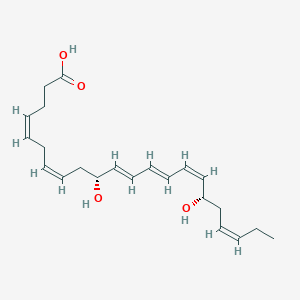Details of Metabolite
| Full List of Protein(s) Regulating This Metabolite | ||||||
|---|---|---|---|---|---|---|
| Hydrolases (EC 3) | ||||||
| Group 10 secretory phospholipase A2 (PLA2G10) | Click to Show/Hide the Full List of Regulating Pair(s): 1 Pair(s) | |||||
| Detailed Information |
Protein Info
 click to show the details of this protein click to show the details of this protein
|
|||||
| Regulating Pair |
Experim Info
 click to show the details of experiment for validating this pair click to show the details of experiment for validating this pair
|
[1] | ||||
| Introduced Variation | Overexpression of Pla2g10 | |||||
| Induced Change | Neuroprotectin D1 concentration: increase | |||||
| Summary | Introduced Variation
|
|||||
| Disease Status | Inflammatory bowel disease [ICD-11: DD72] | |||||
| Details | It is reported that overexpression of Pla2g10 leads to the increase of neuroprotectin D1 levels compared with control group. | |||||
| References | |||||
|---|---|---|---|---|---|
| 1 | Group X Secreted Phospholipase A2 Releases 3 Polyunsaturated Fatty Acids, Suppresses Colitis, and Promotes Sperm Fertility. J Biol Chem. 2016 Mar 25;291(13):6895-911. | ||||
If you find any error in data or bug in web service, please kindly report it to Dr. Zhang and Dr. Mou.

